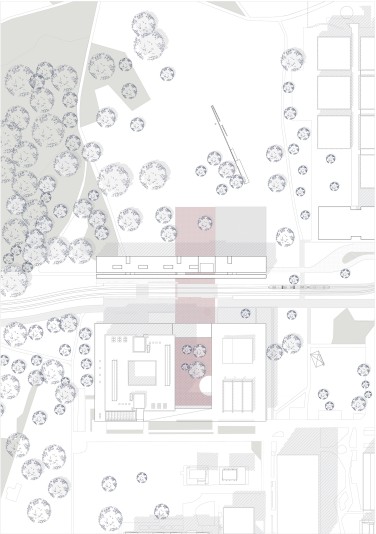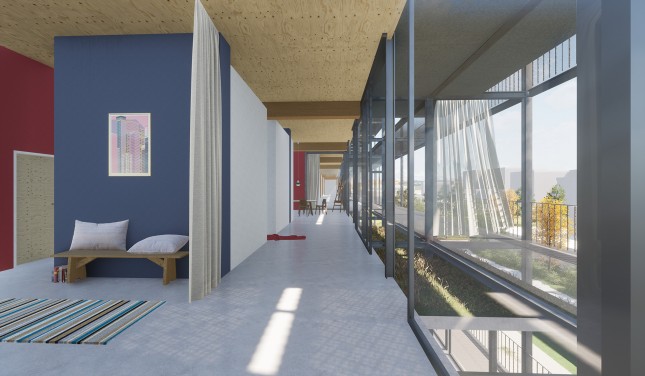Published by the Institute of Design and Building Typology (Prof. i.V. Ruben Lang).
A new, central location for all institutes of the drama department at the Hanover University of Music, Drama and Media is to be planned near the train station by rebuilding the Deutsche Bahn parking lot. The individual departments are currently located at the site on the former Expo grounds, which is to be abandoned and consolidated in the building to be planned. The drama course is to be brought back to the city, thus exploiting synergies through the (re)gained proximity to the other departments of the university. In the course of this, an enlargement of the existing department will also be undertaken in order to accommodate the ever-increasing demand for the course.
The scope of planning includes a new building with approximately 10,000 m² of gross floor area based on the space program, which assumes a main usable area of 4,565 m².
The centrally located site, not far from Hanover’s main train station, is situated at the corner of Augustenstraße and Königstraße. It is bordered to the west by the elevated railroad line. Towards the east and north it is framed by the 4 to 5-storey perimeter block development. The narrowest part of the property ends at Königstraße. The property has an area of approx. 4,900 m².
Two smaller (interim) buildings at the northern end of the site are available for the design task. It may be attached to the railroad track wall. There is no height restriction for the new building to be designed for the Drama Department of the Hanover University of Music, Drama and Media.
The exterior areas are to be attractively designed in accordance with the future use. In addition to the functional requirements for access and development of the building, areas with quality of stay for the users and networking potentials in the city of Hanover are to be provided within the scope of possibilities. Special attention is paid to the address formation and the findability of the building as well as the design of the new entrance and access situation. In this context, the question of the arrangement and design of the main entrance must also be clarified, which should be equally functional and appealing to users and guests.
The architectural design of the new building should do justice to the theme of the drama school but also to the urban environment. The barrier-free access structure inside the building should allow for easy orientation. The central areas and in particular the studio stages should be easy to find, also for guests. The foyer should fulfill its function as a central contact point for students and teachers of all disciplines. At the same time, the entrance area should also be designed in an appealing way for guests attending the theater performances in the studio stages.


















































